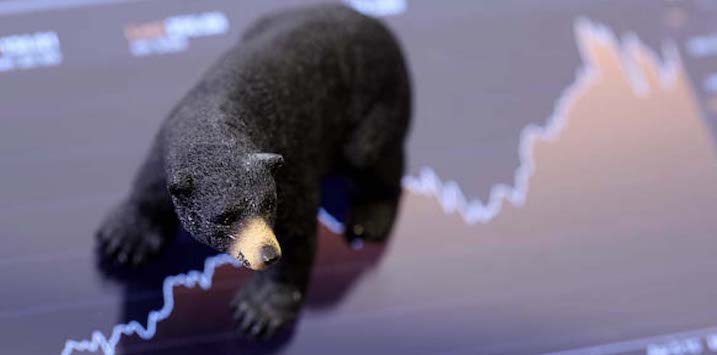
A “pullback” or a “serious bear market”?
Over the past five decades the share-market, as measured by the US S&P 500 Index, has recorded 24 “pullbacks” exceeding ten percentage points. On six of these occasions, or one in four of the “pullbacks”, we have witnessed a “serious bear market”, or a decline exceeding 25 per cent, as illustrated in the table below.
Of the six “serious bear markets” recorded in the past five decades, the average decline has been 42 per cent, and the average duration has been 18 months.
| Period (by years) | Number of Days | Percentage Decline |
| 1969-1970 | 537 | -36% |
| 1973-1974 | 622 | -48% |
| 1981-1982 | 614 | -27% |
| 1987 | 99 | -34% |
| 2000-2002 | 915 | -49% |
| 2007-2008 | 510 | -57% |
| AVERAGE of the Big 6 | 550 (or 18 months) | -42% |
In simple terms, we witness a “pullback” exceeding 10 per cent around every two years, and a “serious bear market”, on average, every eight years. Given 75 per cent of the pullbacks, are just that, many investors have historically used the odds to react accordingly, by adding spare cash to the market.
When we see the markets break down into a “serious bear market”, investors fear drives net selling which generally accentuates the downward move. Net selling near the bottom is a costly exercise, as investors miss the rebound, and a new bull market can begin as abruptly as an old one ends.
The Global Financial Crisis is a case in point, where the S&P 500 after a “serious bear market” lasting around 18 months to March 2009 bottomed at 700 points. The ensuing bull market over the next nine and half years (to September 2018) jumped to above 2,900 points, delivering investors a compound annual average return (excluding dividends) of 16.3 per cent.
Rather than giving readers a lot of data points on why the recent pullback may or may not turn into a “serious bear market”, I thought it better to quote my colleague, Tim Kelley as follows “The obvious question now is Where to next? but, as always, we are unable to offer any reliable insight into whether the market may rebound or continue to decline in the months ahead. Nor can we point to anyone who we think does have this insight. Statistically speaking, sudden declines of this sort are more common than all out market catastrophes. However, the short-term behaviour of the market is extremely difficult to forecast”.